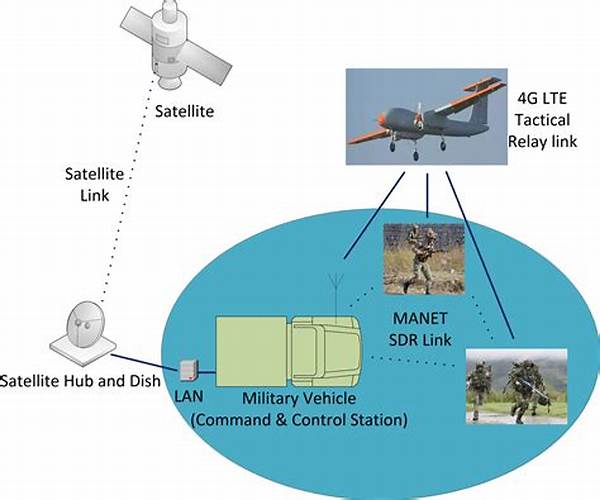Introduction to Wireless Tactical Communication Systems
Wireless tactical communication systems have become a pivotal aspect of modern military operations, ensuring seamless and secure transmission of information on the battlefield. These systems are engineered to provide highly reliable and efficient communication capabilities in challenging environments. Designed to operate independently of existing infrastructure, wireless tactical communication systems are critical for mission success. The systems leverage state-of-the-art technology to offer functionalities such as voice communication, data transfer, and situational awareness updates. Given the dynamic and volatile nature of tactical scenarios, these communication systems are crucial for maintaining operational effectiveness and strategic advantage.
The deployment of wireless tactical communication systems has revolutionized how military units conduct operations. By providing robust and agile communication channels, these systems facilitate real-time coordination and decision-making. Connectivity is maintained despite varying terrain and hostile conditions, which is essential for command and control operations. As military technologies evolve, there is a constant integration of advanced features into wireless tactical communication systems, enhancing their capability to meet the ever-changing demands of defense operations worldwide.
Key Features of Wireless Tactical Communication Systems
1. Operational Flexibility: Wireless tactical communication systems provide unmatched flexibility, allowing military units to adapt quickly to various operational scenarios.
2. Encryption and Security: Ensures that all communications are secure against interception, protecting sensitive military information.
3. Interoperability: These systems are designed to work seamlessly with various military equipment, enabling effective joint operations.
4. Robustness: Engineered to withstand harsh environmental conditions, ensuring communication continuity.
5. Mobility and Portability: Designed for easy transportation and quick deployment in diverse operational environments.
Technological Advancements in Wireless Tactical Communication Systems
The advancement of wireless tactical communication systems is characterized by the integration of cutting-edge technologies to enhance operational effectiveness. Innovations such as software-defined radios, advanced encryption techniques, and enhanced spectrum management have significantly improved these systems. Software-defined radios enable adaptive communication capabilities, seamlessly switching frequencies and modes to overcome adversaries’ attempts to disrupt communications. Advanced encryption safeguards communications, making interception attempts futile and ensuring the privacy of tactical discussions. Enhanced spectrum management allows optimal use of available frequencies, reducing the possibility of interference and ensuring clarity in transmission.
Furthermore, the introduction of artificial intelligence and machine learning into wireless tactical communication systems has brought considerable improvements in terms of predictability and responsiveness. These technologies help in anticipating adversarial actions and adapting communication strategies accordingly. The incorporation of these advanced features ensures that wireless tactical communication systems remain resilient, reliable, and at the forefront of military communication technologies.
Applications of Wireless Tactical Communication Systems
1. Battlefield Management: Facilitates the coordination of troops and resources efficiently.
2. Unmanned Systems: Critical for controlling drones and other unmanned vehicles for reconnaissance and attack missions.
3. Humanitarian Assistance: Assists in communication during disaster response and humanitarian missions, ensuring efficient operation.
4. Secure Messaging: Offers secure channels for transmitting sensitive information.
5. Real-Time Intelligence: Provides accurate and immediate intelligence updates for informed strategizing.
6. Joint Missions: Enables coordination among different military branches and allied forces for cohesive operations.
7. Situational Awareness: Enhances decision-making by providing real-time updates on operational environments.
8. Network Resilience: Ensures continuous operation through redundant communication paths.
9. Remote Command and Control: Supports distant operations by enabling command functionalities from remote locations.
10. Training and Simulation: Utilized in military training exercises to simulate real-world communication scenarios.
Challenges and Solutions in Wireless Tactical Communication Systems
Operating wireless tactical communication systems in diverse environments presents several challenges, including spectrum availability, adversarial jamming, and environmental obstacles. Solving these issues requires strategic approaches such as adaptive frequency hopping and dynamic spectrum allocation to minimize the risk of interference and optimize performance. The development of jamming-resistant technologies further fortifies these systems against adversarial attacks, ensuring secure and uninterrupted communication. Additionally, strengthening infrastructure resilience is vital, allowing systems to recover quickly from disruptions.
Moreover, the complex topology of varied terrains necessitates robust and adaptable network architectures. Implementing meshed network structures allows for multiple communication pathways, increasing redundancy and reliability. Addressing these challenges is imperative to maintaining the effectiveness of wireless tactical communication systems and securing information dominance in military operations.
Future Prospects of Wireless Tactical Communication Systems
The future of wireless tactical communication systems holds great promise with ongoing advancements in communication and information technologies. The integration of next-generation technologies such as 5G and quantum communication will further enhance system capabilities, providing unprecedented speed, efficiency, and security. These developments will expand operational reach and enable the handling of larger data volumes with improved reliability.
The future landscape also sees increasing reliance on autonomous systems and the Internet of Military Things (IoMT), which necessitates more advanced wireless communication infrastructures. Investing in research and development will be critical to adopting these forward-looking technologies, ensuring that wireless tactical communication systems continue to meet the demands of modern warfare and beyond.
Summary of Wireless Tactical Communication Systems
In summary, wireless tactical communication systems play an indispensable role in modern military operations. These systems provide essential capabilities such as secure communication, data transmission, and situational awareness. The continuous evolution of technology has allowed these systems to remain adaptive and resilient, ensuring effective operation in complex and challenging environments. Overcoming obstacles such as spectrum limitations and environmental factors is pivotal for maintaining optimal system performance. As military strategies and technologies advance, wireless tactical communication systems must continually evolve to remain an indispensable asset in defense operations globally.
Looking ahead, the integration of emerging technologies such as artificial intelligence, quantum communication, and the IoMT will further enhance the capabilities of wireless tactical communication systems. These advancements will drive the next generation of communication solutions, ensuring that military forces can operate with superior information dominance and coordination. With ongoing research and development, the future of wireless tactical communication systems is poised to become increasingly vital in achieving strategic military objectives.





